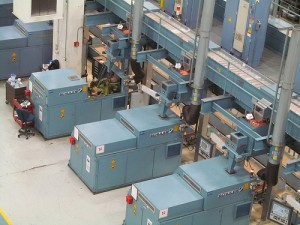During the recent media availability, U.S. Mint Director David Ryder said that the U.S. Mint is the only sovereign mint in the world to produce its bullion products since the start of the pandemic without interruption.
When COVID-19 affected the entire population, nobody understood the virus. In a panic, the entire world shut down. We did not understand the effects, but people were getting sick, requiring ventilators and scarce resources, and filling hospitals. For the U.S. Mint, there was an outbreak at the West Point Mint that affected production. They moved production to Philadelphia while those in West Point went into quarantine.
Like many critical businesses, the U.S. Mint reworked its schedule, added health precautions to keep workers safe, and continued production. While the numismatic world was worried about grading bullion coins from Philadelphia as an attempt to make a buck, the U.S. Mint was dealing with the health and safety of their workers.
It puts the industry’s selfishness in perspective.
Analysts give us many reasons why precious metals have risen, and the demand for bullion coins defies the usual analysis. Still, the U.S. Mint has been operating to supply a clamoring market.
Bullion production did slow down. The temporary closing of the West Point Mint reduced the resources they could use to produce bullion coins. There were also production problems by the U.S. Mint’s suppliers in producing the blanks they use. Those businesses were also facing COVID-19 issues that limited their capacity. And do not forget about the mines that could not operate or operated with limited capacity so they can protect their workers.
Ryder said that the procurement staff was diligent in using their resources to ensure the U.S. Mint had the materials to manufacture bullion.
Further limiting the U.S. Mint’s ability to manufacture bullion was the requirement to satisfy the orders for circulating coinage from the Federal Reserve.
As retailers were opening with new precautions, they reported that it was not easy to change because there were not enough coins. Headlines of a “coin shortage” became a topic. When the Federal Reserve investigated the issue, they found there were enough coins in the economy. Because the economy was not moving, circulating coinage was not circulating.
The problem was that the supply chain was interrupted and not moving as expected.

Coin Pusher in a penny arcade. Cambridge Midsummer Fair 2005 (Photograph © Andrew Dunn, cc-by-sa-2.0)
In the pandemic version of the game, the U.S. Mint manufactured coins so the Federal Reserve could dump billions into the economic hopper, hoping that some would fall out into the circulating economy.
In 2020, the U.S. Mint struck 14.774 BILLION coins, 23.7-percent more than they struck in 2019. Nearly every industry reported a reduction in demand and the ability to produce products. And the supply chain continues to affect production in some industries, including tech, where there is a shortage of computer chips. But the U.S. Mint was able to add over 14 BILLION coins to the economy.
The U.S. federal government continues to operate under mandatory pandemic-related protocols. As a federal bureau, the U.S. Mint continues to do its part to maintain social distancing and keeping its workers safe. No company, industry, or government has continued or boosted its production in this manner in the last 18 months.
Remember, the U.S. Mint does this without using any money from the general treasury. Their operating budget comes from the seignorage (profit) from the coin manufacturing process. When the profit exceeds their needs, a portion of the money is deposited in the general treasury. The more money the U.S. Mint makes, the more money they deposit in the general treasury. Talk about a money-making operation.
The U.S. Mint continues to have problems dealing with the collector market. Given the circumstances they have faced over the last 18 months, you have to admire their accomplishments.


